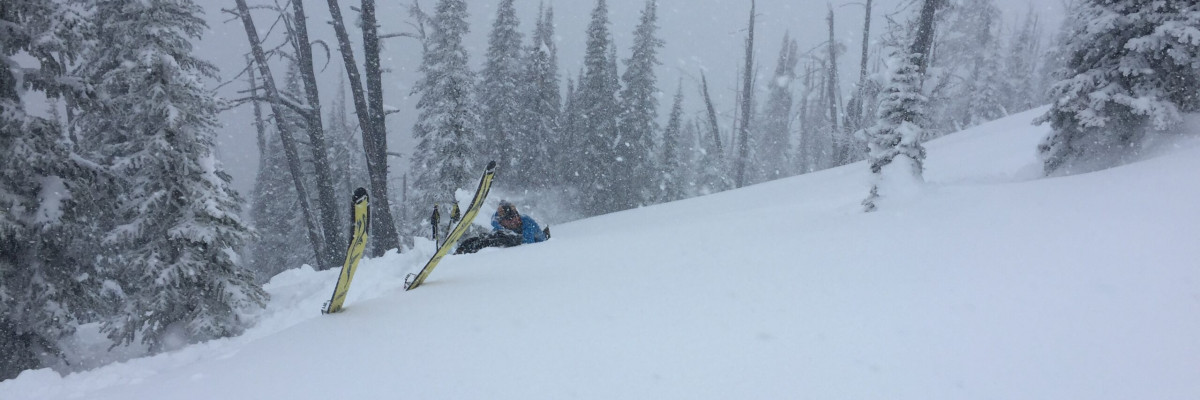The avalanche danger is CONSIDERABLE for the West Central Montana backcountry on wind loaded slopes. Strong winds and significant snow are creating dangerous avalanche conditions, making human-triggered avalanches likely on leeward slopes. All other slopes the danger is moderate.Careful snowpack evaluation, cautious route-finding, and conservative decision-making are essential for travel in the backcountry today.
Good morning, this is Travis Craft with the West Central Montana Avalanche Center’s avalanche advisory for March 10, 2018. This danger rating does not apply to operating ski areas, expires at midnight tonight and is the sole responsibility of the U.S. Forest Service.
Weather and Snowpack
Mountain temperatures range from 15 F to 21 F in the region. In the Bitterroot winds are 6 mph with gusts of 8 mph out of the SW. In the northern part of the advisory area, winds are reading 9 mph with gusts of 14 mph out of the NW. The forecast area received 6 to 12 inches of new snow in the last 24 hours.
Logan and I toured in the Rattlesnake yesterday. We found very sensitive wind slabs. The storm came into the area with considerable winds. Look for leeward slopes to have small to large wind slabs. We got shooting cracks from our skis.
The primary avalanche problem today is wind slabs. Leeward terrain was loaded yesterday. Look for shooting cracks from skis or machine to identify instabilities. Identify wind loaded terrain. Look for rounded pillows of snow near ridgelines and on cross-loaded slopes. Recognize signs of instability such as cracking in the surface snow. It is possible to cause a slab avalanche on wind loaded terrain today.
The second avalanche problem is loose wet. Rollerballs will be signs of surface instabilities. If you see pinwheels, it is time to change aspects.
Overall our snowpack is relatively stable. Identify wind loaded terrain. Dig a pit 3 feet deep before committing to any steep terrain(>35 degrees). Use small test slopes to see how the new snow is bonding to old snow surfaces. Cornices are very large this time of year and unpredictable in failure, give them a wide berth. Loose snow avalanches should not be a problem unless they knock you down and take you into a terrain trap.
Avalanche and Weather Outlook
Warm temperatures and sun for the next couple of days. See the forecast here. Wind slabs will be less sensitive to human triggers. With Freezing overnight and solar activity, look for loose wet avalanches to be the primary concern.
If you are out in the backcountry, please send us your observation, these are very helpful in producing the advisory.
Ski and ride safe.
























